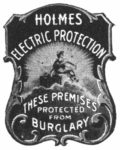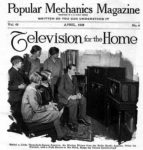The first burglar alarms go online, Edison shows of his new electric railway and the US launches its first space station… It all happened This Week in Tech History.
This week in 1877 – Edwin Holmes of Boston, MA. Setup the first network of burglar alarms that were monitored by a central station in New York City. He then sent his son to copy that system in Boston. His son realized that they could use existing phone cables to carry the signals, instead of laying their own. This allowed the network to quickly grow to more than 700 burglar alarms. A system that gave rise to the 28 billion dollar industry we know today.
1880 – At his Menlo Park lab, Thomas Edison ran his first test of the electric railway. His locomotive pulled three train cars down a track about a third of a mile long. Electric current was generated by two motors in Edison’s machine shop and transmitted by underground cable to the rails, which powered the 12 horsepower motor on the locomotive. Today, nearly 140 years after Edison’s first test, electric railways are still in use all over the world.
1928 – Experimental television station W2XB in Schenectady, New York, popularly known as WGY TV after it’s sister radio station, began the first regular schedule of TV programs. It was a very short schedule. WGY offered programming to the upstate New York audience three times a week for 30 minutes, using the mechanical scanning method. And mechanical scanning was not to be the wave of the future. It was electrical scanning, developed by Philo Farnsworth, that would make television available to the masses.
And this week in 1973 – Skylab was launched by NASA from Kennedy Space Center. Skylab was the first space station launched by the United States and the only one to be exclusively operated by the US. Skylab included a workshop, a solar observatory, and other systems necessary for crew survival and scientific experiments. Skylab’s re-entry in 1979 was an international media phenomenon with souvenirs for sale that included a bottle of “Skylab Repellant” that came with a money back guarantee if you were to be hit by a piece of debris. The parts of Skylab that didn’t burn up on re-entry landed in mostly unpopulated areas of western Australia. One county fined NASA $400 for littering, which went unpaid until 2009 when it was paid on behalf of NASA with funds raised by a morning radio show.





